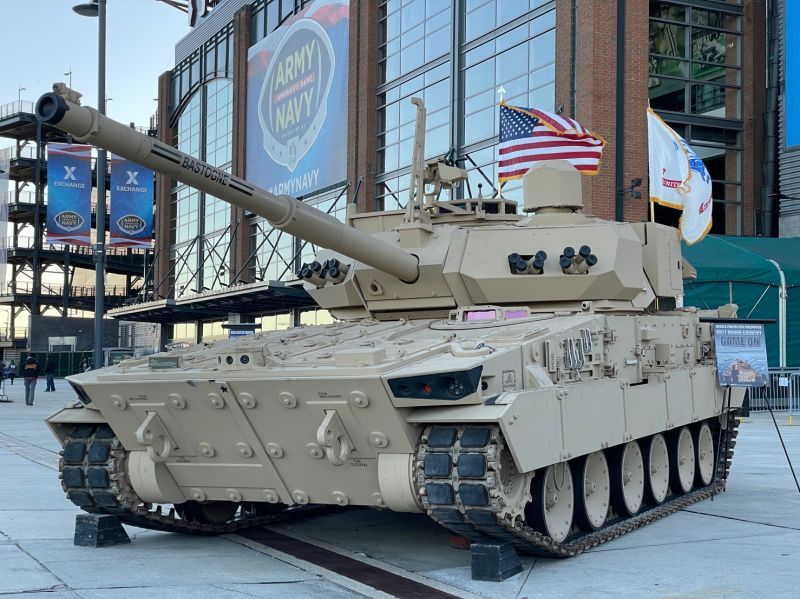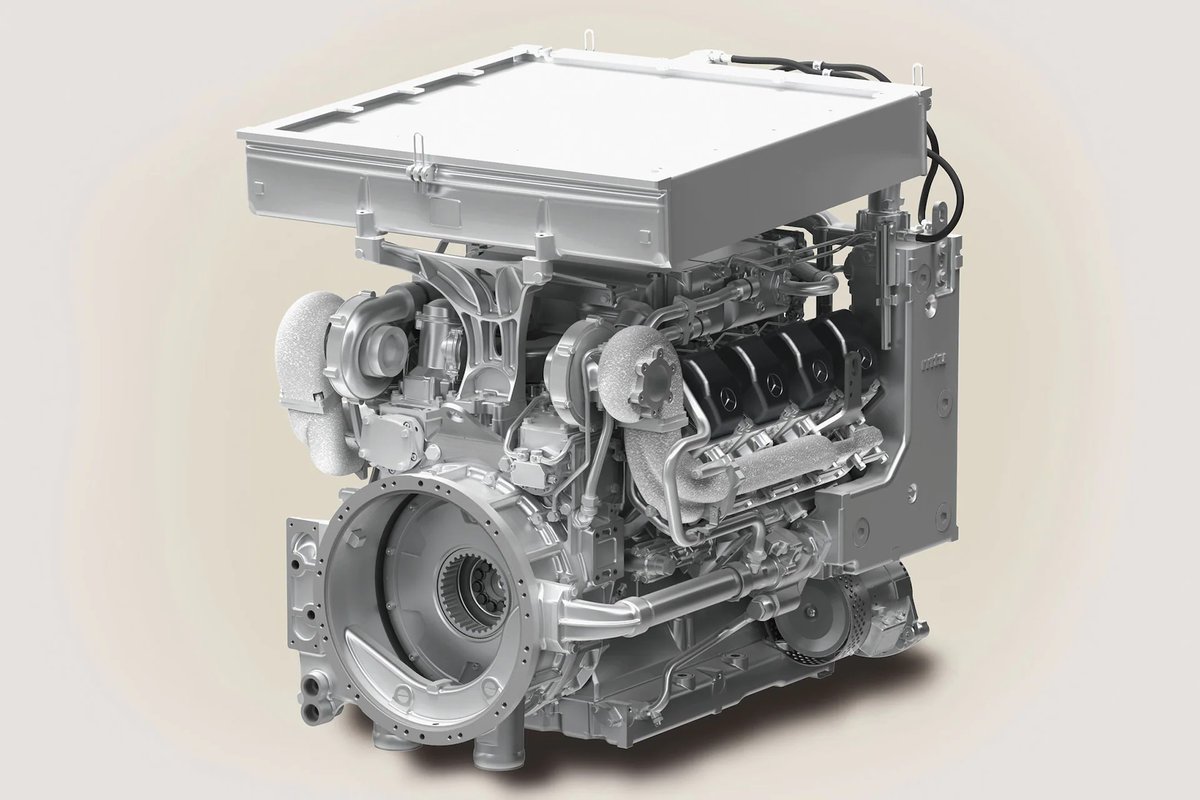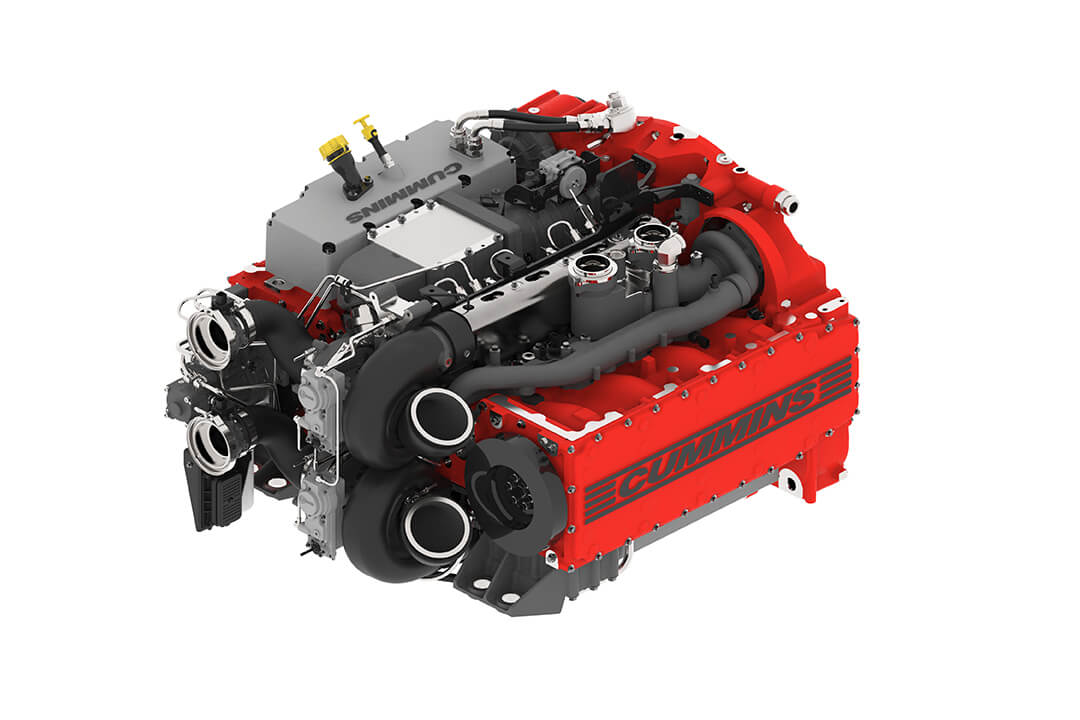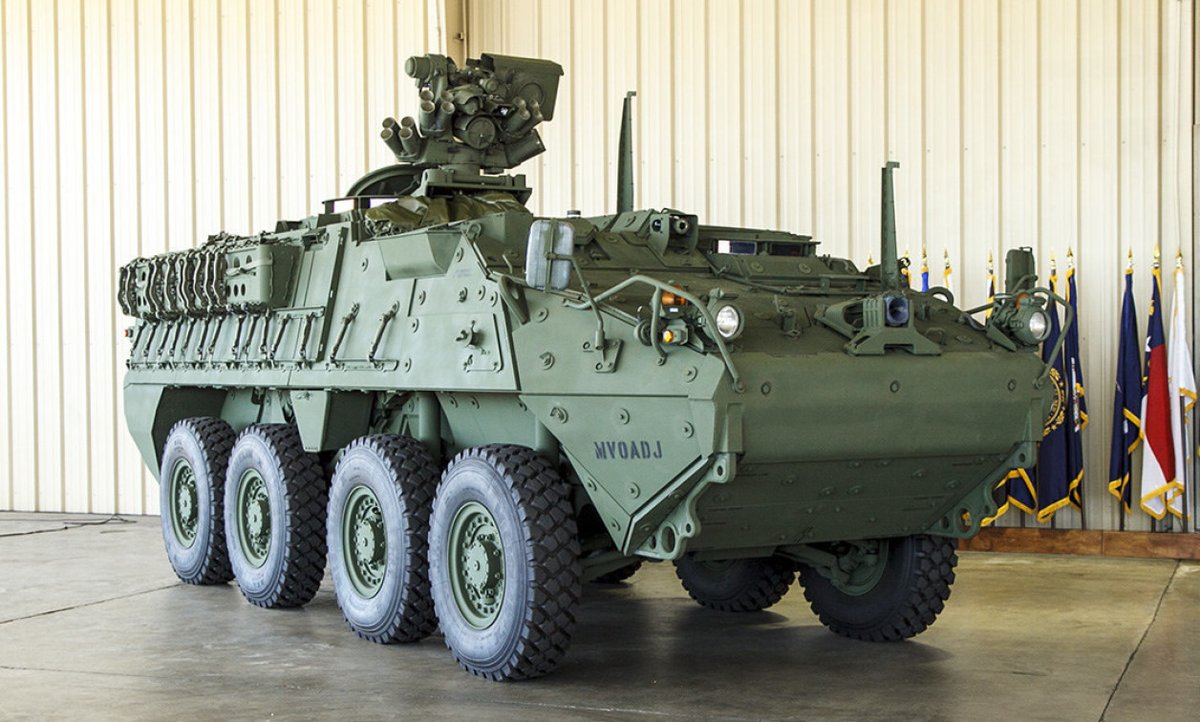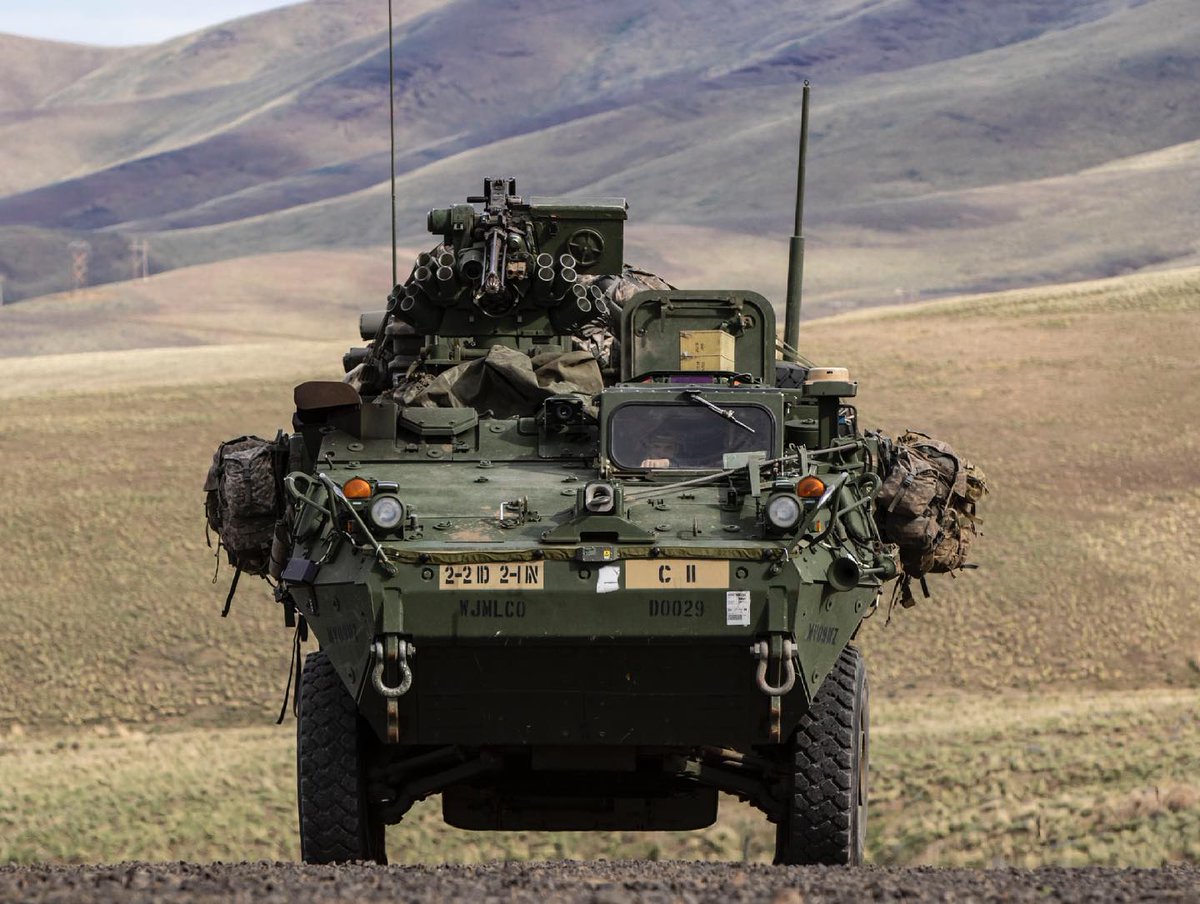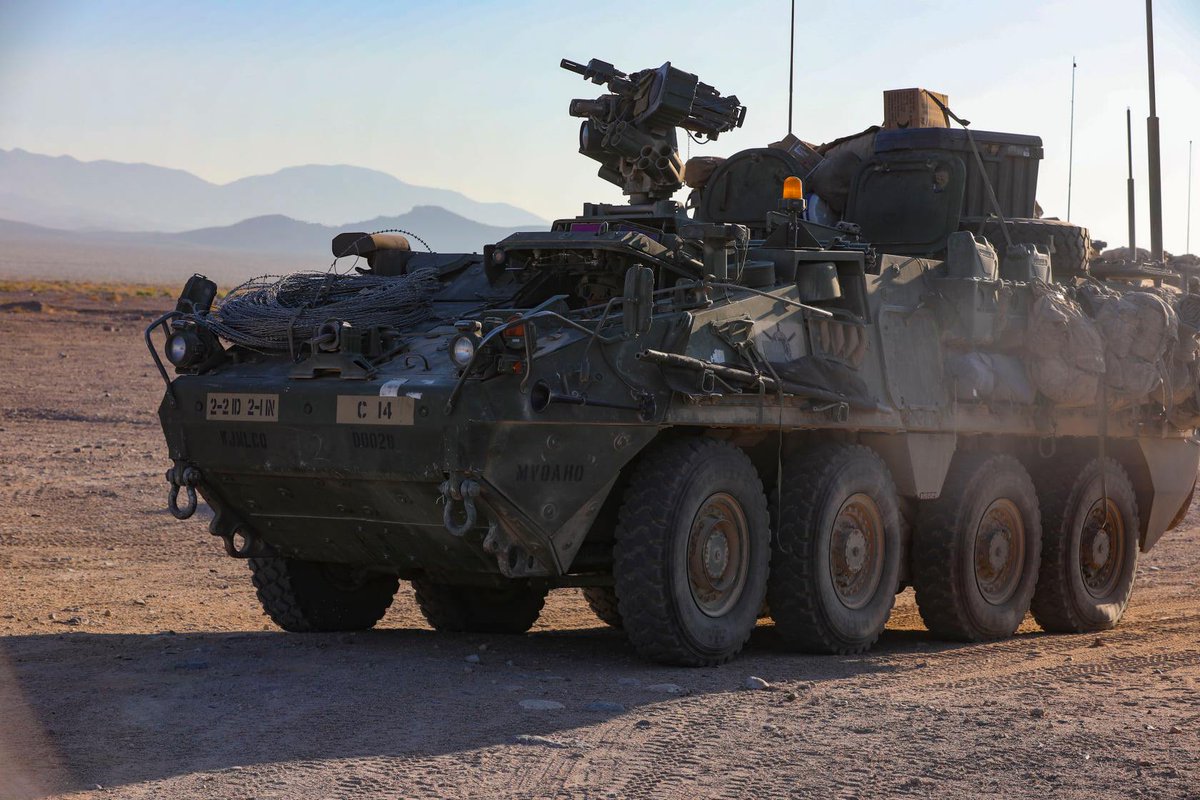
The @ArmorCollection recently preserve one of twelve prototypes of BAE Systems' Mobile Protected Firepower (MPF) vehicle for historic and research purposes. This is a special design and different from the winning GDLS proposal. This thread will introduce it a bit more. 
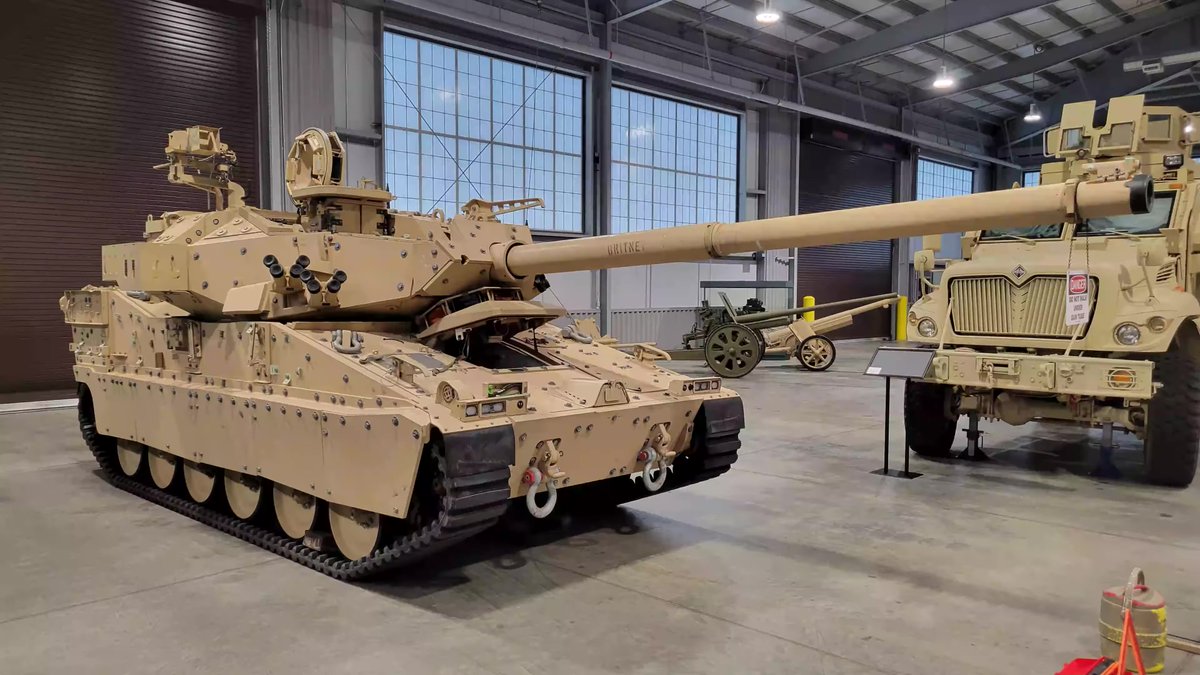
(Thanks Jim Miller, BAE Systems’ vice president of business development, for the great information.)
BAE Systems' Mobile Protected Firepower (MPF) formerly known as Expeditionary Light Tank (ELT), is a further derivative of canceled M8 Armored Gun System. 

In December 2018, BAE and General Dynamics were selected as finalists for the Army's MPF competition and won contracts to build 12 prototype vehicles. 

BAE MPF has similar size, weight, space as M8 AGS, but BAE has redesigned most of the subsystems of the vehicle. BAE MPF only carries a three-man crew, giving it a smaller profile and smaller radar cross-section. 

BAE MPF extends its turret sides to accept Elbit's Iron Fist APS, which also added a ton to the weight. BAE MPF weights 27 tons in full configuration and 23+ tons in standard configuration with applique armor.
(photo:@SofiGaming)
(photo:@SofiGaming)

A C-17 will fit three BAE MPF vehicles in full armor configuration, and a C-130 could fit one vhicle in standard configuration. (The example of the picture is CCVL) 



The turret of BAE MPF is armed with 105mm M35 soft-recoil gun and 7.62mm coax MG. The autoloader on the left has been modified allows the gun to fire at a rate of 12 rds/min. The extension on the rear right side of the turret is part of automatic loading system. 







The commander is seated on the right of turret and the gunner is seated forward of the commander and has a single piece hatch cover that opens forwards. Forward of this is new stabilised day/thermal night sight with laser range-finder. 

The commander has a rotatable cupola with seven periscopes. A flex mount 12.7mm heavy machine gun is provided on the commander's cupola. 

Old Raytheon Gunners Primary Sight on AGS has been replaced by the new sighting system provided by Leonardo DRS. DRS sighting system has been integrated Second Generation FLIR sensor, providing thermal imagery, day or night, in all weather and degraded battlefield conditions. 

BAE did not offer an independent commander sight since it was not required. It's apparently not used as a tank, so no independent viewer system for the commander. CITV is a option that it could be added later. 

The driver has new 360 MVP Sensor system developed by BAE Systems Electronic Systems. A front camera and a rear camera each with 120 degree view, providing situational awareness and threat detection while under the protection of armor. 

The BAE MPF is powered by new MTU 6V199 TE21 diesel engine developing 550 hp on JP-8 fuel and 585 hp on diesel fuel, which replaced discontinued Detroit Diesel Series 92 engine on M8 AGS. 

The engine is coupled to a Allison 3040 MX cross drive automatic transmission. It features 4 forward 2 reverse speeds, hydraulic power type braking, hydrostatically controlled-infinitely variable typesteering. 
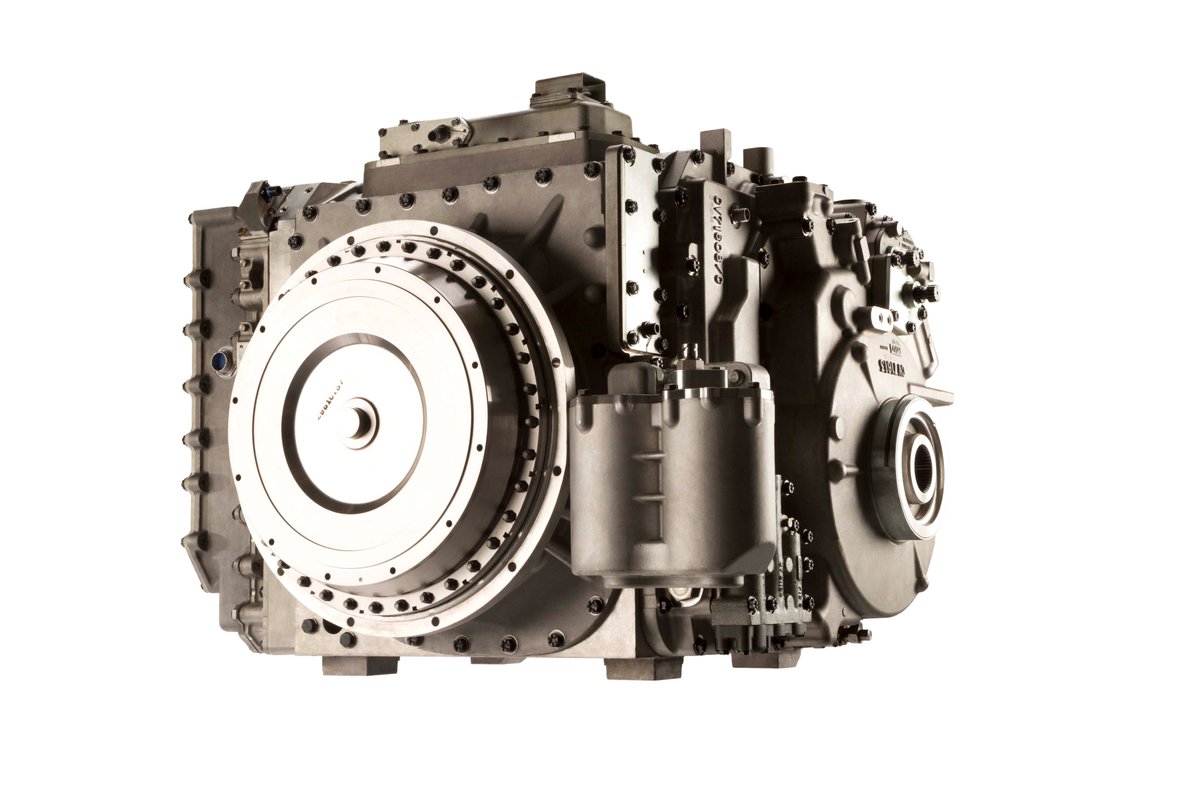
The roll-out powerpack design allows for easy access to the engine and transmission without the aid of heavy equipment. 

BAE MPF uses new Composite Rubber Track (CRT) developed by Soucy Defense. The CRT features better fuel economy, braking, and acceleration, reduces noise and weight. The suspension is basically AGS but modified for Soucy track. 

BAE MPF can reach maximum speed on road of 45 miles per hour and stopping distance is two vehicle lengths when travelling at a speed of 45 mph. 
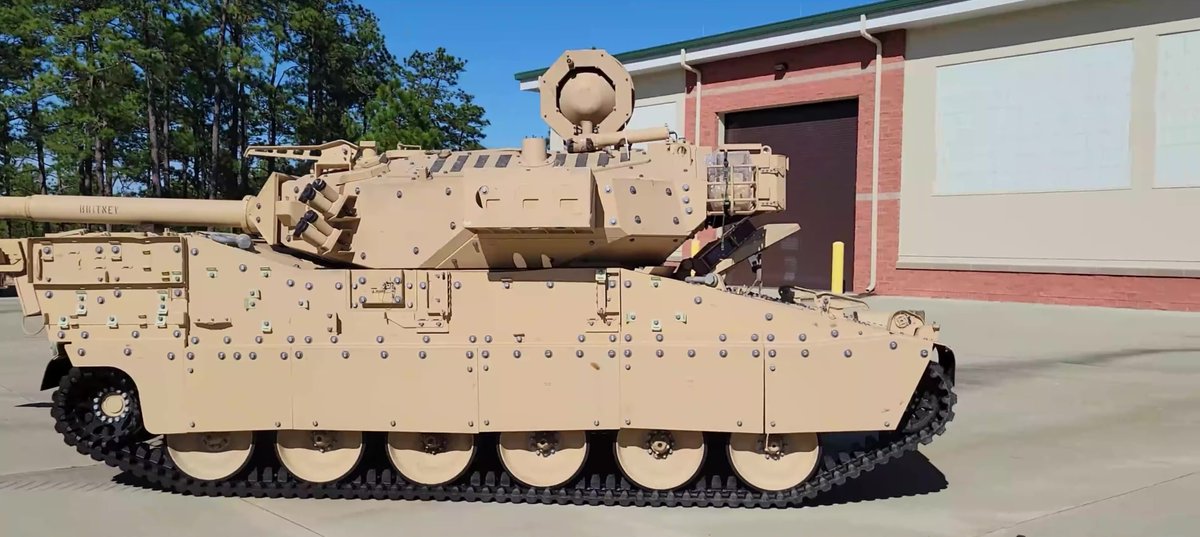
BAE MPF features modular bolt-on reactive armor package to provide higher protection level. HIghest level armor package will provide the same level of protection as AMPV against mediun caliber cannon and RPG-7 anti-tank weapon. 

For underbelly protecion improvement, BAE MPF uses the same new high energy buried arc welded (HEBAW) aluminum alloy lower hull as AMPV to absorb mine blast. 

BAE MPF can also integrate Elbit's Iron Fist active protection system. The launchers are mounted on the sides of the turret, but the fixed radar sensors on the turret front will take up space for add-on reactive armor package. 



The design of BAE MPF has many merits such as the size and the maintenance. It is actually an affordable solution for other customers with corresponding needs. 

• • •
Missing some Tweet in this thread? You can try to
force a refresh






